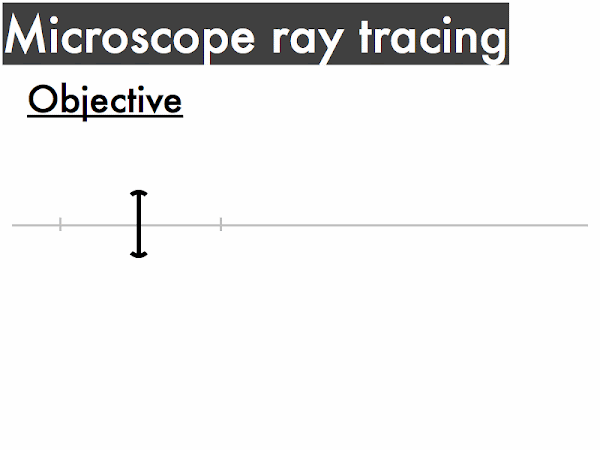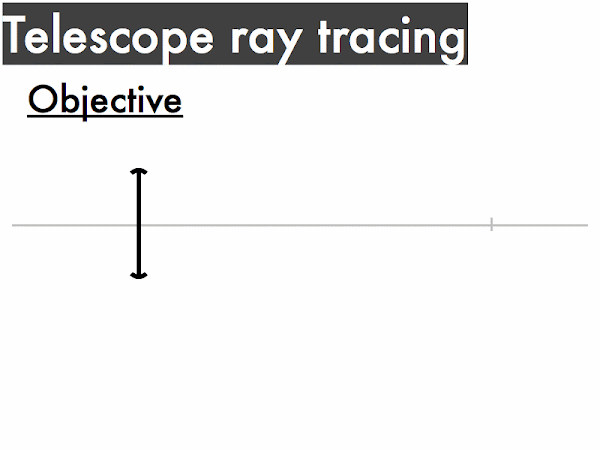Cuesta College, San Luis Obispo, CA
Students have a weekly online reading assignment (hosted by SurveyMonkey.com), where they answer questions based on reading their textbook, material covered in previous lectures, opinion questions, and/or asking (anonymous) questions or making (anonymous) comments. Full credit is given for completing the online reading assignment before next week's lecture, regardless if whether their answers are correct/incorrect. Selected results/questions/comments are addressed by the instructor at the start of the following lecture.
The following questions were asked on reading textbook chapters and previewing presentations on runaway planets (Venus and Mars), jovian planets (Jupiter, Saturn, Uranus and Neptune), and the dwarf planets (and the International Astronomy Union classification scheme).

Selected/edited responses are given below.
Describe something you found interesting from the assigned textbook reading or presentation preview, and explain why this was personally interesting for you.
"The section about greenhouse gases because I've heard the term used a lot before, but never really knew what it meant."
"How mass plays into the atmospheric density and the releasing of greenhouse gases of a planet. I also remembered when reading the section on temperature and distance from the sun/size, the example from class about the turkey and the cornish hen effect. This is what honestly made it interesting--your anecdote!"
"How studying the greenhouse effect of other planets can provide some insight into our own planet."
"I find it very interesting and alarming that the greenhouse gas cycles of planets go awry for different reasons. What happens if it happens to Earth?"
"How similar Venus and Earth were, but how the difference in distance from the sun made them so different."
"I was kind of blown away to find out that we've landed space probes on Venus. I didn't think anything could survive that!"
"How Venus and Mars have had problems with their greenhouse gas cycles (runaway greenhouse effect) especially because that is a problem we are having on Earth right now. Could it be inevitable?"
"I find it interesting that Mars once had a different climate that permitted water. I know that Earth changes, but when I think of other planets I just never really thought about how their climates and surfaces/atmos' might have changed. It also made me a little sad when the textbook stated at the end of the chapter: 'Mars is now a cold, dry world.'"
"I've known about scientists finding evidence of water on Mars before, but I had no idea of the scope of it. The textbook mentions the term 'outflow channels,' which were valleys cut away by massive floods that apparently carried around 10,000 times the volume of water from Earth's Mississippi River. I find it interesting because how much water could possibly be underground and maybe the original Total Recall movie had a pretty good idea going for them."
"I was intrigued about the possibility of oceans and earth-like atmospheres on the 'runaway' planets. Curious as to whether or not scientific advancements could cause one of them to replicate a life-sustaining environment."
"How jovian planets get their weather mostly from their core heat. Earth's weather is dependent on solar heat, evaporating water, causing rain, etc., etc. It's very 'out-in,' But jovian planets have a weather that's more 'in-out.'"
"That the surfaces of the jovian worlds were made of gas and therefore unable to be walked on."
"How to tell if something is actually classified as a planet. I thought it was a much complicated process than the IAU's three questions."
"I really appreciated the explanation for Pluto's updated status as a dwarf planet. I remember learning about the change when I was very young, and being so confused."
"To learn about the three questions that can be asked to classify whether or not an object is a planet. I never really knew what the qualifications were, and I was curious as to why Pluto was demoted."
"The way they choose to classify planets--we only have so much information and it changes a lot but they figured out a nice basic system to classify things with."
"The reasoning behind Pluto no longer a planet. After reading why, it makes more sense that Pluto is better defined as a dwarf planet."
Describe something you found confusing from the assigned textbook reading or presentation preview, and explain why this was personally confusing for you.
"The runaway greenhouse model for Venus; I didn't really understand what 'stronger greenhouse effect' meant."
"Just a brief explanation on the surface of Mars and how some areas are younger and how it had water."
"I'd like to go more in-depth on the atmospheres of each planet."
"How volcanic activity is affected by the crust and its relationship with how a planet develops is a bit hard to understand."
"I think the greenhouse effect is something that I'm going to need to take some time to understand. I think I'll be able to get it, but I just need to think on it a bit longer. It's just confusing to keep everything straight in my head."
"Why every planet is so different."
"How Mars had flowing water at one point and now it doesn't. I just don't understand what caused the water to freeze."
"The IAU rules and classes were a bit confusing. While I could guess which depicted planetesimal was actually considered a planet, I could not truly tell the difference."
"A little confused on what classifies a planet."
Identify the relative amounts of these characteristics for Venus, compared to Earth. (Only correct responses shown.)
Interior core heat, today: about the same as Earth [36%]
Geologic activity, today: less than Earth [52%]
Volcanic outgassing, up until now: about the same as Earth [42%]
Heat from the sun: more than Earth [85%]
Amount of atmosphere, today: more than Earth [70%]
Identify the relative amounts of these characteristics for Mars, compared to Earth. (Only correct responses shown.)
Interior core heat, today: less than Earth [91%]
Geologic activity, today: less than Earth [73%]
Volcanic outgassing, up until now: less than Earth [61%]
Heat from the sun: less than Earth [88%]
Amount of atmosphere, today: less than Earth [85%]
Which jovian planet has the coolest interior temperatures?
Jupiter (most massive). [0] Saturn (most prominent rings). [0] Uranus (least active weather patterns). ******************* [19] Neptune (farthest from the sun). *********** [11] (Unsure/guessing/lost/help!) *** [3]
I believe Pluto should be a planet.
Strongly disagree. ** [2] Disagree. *********** [11] Neutral. ********** [10] Agree. ******** [8] Strongly Agree. ** [2]
Briefly explain your answer to the previous question (whether Pluto should be a planet).
"After the explanation of dwarf planets, Pluto is more similar to Eris and Ceres. Also Pluto is like Kuiper belt objects that are caught in orbital resonance with Neptune."
"I really want Pluto to be considered a planet. As silly as it seems kicking Pluto out is so rude. When I see the criteria for what makes something a planet it makes sense why Pluto would be more of a dwarf planet."
"Pluto isn't classified as a planet (though I wish it was) because it does not dominate its orbit."
"I cannot quite make out from the presentation whether or not Pluto is a planet. However, Pluto seems to rotate the sun, retains a spherical form, and appears to have a dominant orbit."
"Well, the states that one part of the criteria to be a planet in the Jovian system is that it needs to be 'large enough to dominate and gravitationally clear its orbital region of most other objects.' This is one reason why Pluto can't be one of us...it's just too puny."
"Why make Pluto a planet then kick him out; that's just rude."
"As much as I wish Pluto was a planet, Pluto isn't large enough 'to dominate and gravitation-ally clear its orbital region, or all, other objects.'"
"On one hand it orbits the sun and has moons and geological activity like other planets, but on the other hand it is so small and resembles many other 'dwarf planets' of a similar type. I think calling them dwarf planets is a happy medium."
"Pluto is not considered a planet because it is in the Kuiper Belt. Pluto also doesn't meet one of the IAU's criteria which is being able to be large enough to dominate/gravitationally clear its orbital region. In my <3 Pluto is still a planet though (I remember your bit about the legal drinking age. but I dont care. long live Pluto.)"
"I understand that by scientific qualifications that Pluto doesn't make the standard, but I suppose I have some nostalgic fondness for when Pluto used to be considered a planet when I was a kid."
"It has moons, and it is also young. Over time I think it will develop."
"Because I grew up with it a planet and when it changed I got really upset."
"Pluto has four more moons than Earth, it should be a planet."
"This isn't a joke. If you gain a place in a sports hall of fame, you can't be taken out. It's like the states. We've had civil wars over this kind of stuff. Once a state, always a state. Donald Trump still has a star on the boardwalk. We are better than this. Little people are still considered people. Pluto will always be a (dwarf) planet."
"From what I can tell it looks round, it orbits the sun, but I don't know if it dominates it's orbit so that's why I agree rather than strongly agree."
"I do not have more authority then established, professional astronomers to make that decision based on opinion and nostalgia."
"Mike Brown ("The Man Who Killed Pluto") spoke at an event that I was at for my old job. He convinced me!"
"On one hand I was used to Pluto being a planet. But i understand that due to its size and the discovery of larger planets farther out, in comparison that it just doesn't fit the qualities that we used to define a planet anymore. But at least they still call it a dwarf planet."
"I see both sides to the argument and just don't care either way."
"I don't believe it should be a planet because it isnt big enough to clear its orbital path. If it were considered a planet then shouldnt all of the other similar dwarf planets have to be considered planets as well?"
"It is not a planet because it does not dominate its orbit. The dwarf planet isn't able to bring in and project objects in and out of its orbit."
"According to the International Astronomical Union it passes the three questions so it should be a planet."
"I can see it going either way. Pluto does orbit the sun, but is shaped differently from traditional planets."
"I'm not much for nostalgia. Bye, Pluto."
"More educated and informed people than me should be the ones to make this decision."
"One less to learn about."
"According to the three questions asked for Pluto to be considered a planet, it doesn't appear to be so. Pluto does not appear to be completely round or be big enough to dominate orbit. I'd say no..."
"It is still circulating in our solar system but it does not meet the IAU's standards for what a planet is so I am neutral."
"I grew up when Pluto was a planet but I guess they decided that Pluto is not worthy of being a planet. I don't know much about it so I can't really argue against it or if I agree."
"I see why Pluto shouldn't be a planet but its just so sad because when I was in like first grade it was a planet. Then they took it away. Like taking a cookie away from a hungry college student."
"Pluto is one of the many frozen bodies around the Kuiper belt. It has not met the criteria to be a planet. To be considered a planet it needs to clear the debris from its original neighborhood."
"I disagree because I have taken three weeks of an astronomy class and therefore do not feel qualified to argue with astronomers. They are probably right."
Ask the instructor an anonymous question, or make a comment. Selected questions/comments may be discussed in class.
"If greenhouse gases come from humans and manmade waste then how do Mars and Venus have them?" (Remember that the vast amount of greenhouse gases (which includes water vapor) were outgassed from volcanoes; this may be a lot or a little depending on how active Venus' or Mar's volcanoes were over billions of years.)
"How is there even water to freeze on Mars if liquid water boils away? Also, if Mars is a cold planet how does water 'boil away?'" (Most of the water on Mars escaped when its atmosphere was lost over time; remaining water is permafrost, permanently frozen underground. Liquid water would "boil away" on Mars because the air is so thin (basically nearly empty space!), the water molecules in liquid form would easily "jump away" from each other to escape into the thin air; this happens so violently that you would see it "bubble" away as it disappears into the air, which basically is what boiling is about. On Earth, where the air is much thicker, it's much harder for water molecules in to escape from liquid form, so you have to deliberately raise the temperature a lot to force them to "jump away" into the air.)
"The planets are interesting, but I don't know why they are separated into two separate sections; like what's the point?" (It's just useful to group the rocky terrestrial planets together to discuss their similarities/differences; and the larger, gaseous jovian planets together to discuss their similarities/differences.)
"I don't understand gas giants. If atmospheres can escape like what happened to Mars, and if gas giants are basically all atmosphere, why don't we see them dissipating quickly? If it's just because of mass, why are smaller planets like Uranus and Neptune just as much a gas giant as Jupiter and Saturn?" (Jovian planets are so much more massive than the terrestrial planets that they not only have enough gravity to hold on their their vast gaseous atmospheres, their gravity allows them to compress and squish the lower parts of their atmospheres from gaseous form into liquid metallic hydrogen or warm slushy ices.)
"Any reason in particular why we aren't talking about Jupiter's and Saturn's rings and moons? Just curious." (That's a whole additional quiz worth of material right there that we just don't have time for. However, many of Jupiter's and Saturn's moons are a lot like Earth (but with ice-covered oceans) or Mercury (small, rocky, lots of surface impact craters, cooled-off interiors), so if we covered them it would be more of the similarities/differences discussion we've been doing for the terrestrial planets.)
"I found confusing how Jupiter has a liquid interior, but not on its surface and about its magnetic field." (Since Jupiter is primarily hydrogen, think of it like a very, very tall stack of pillows, where the top pillow is the top of its atmosphere, and the bottom pillow is its core. The force of gravity will compress this "pillow stack," where the top layers are fluffy (the gaseous upper layers), while the bottom layers are more and more compressed, resulting in squeezing the gas molecules and atoms into a more compact liquid form. The circulation of this resulting metallic liquid in deep interior of Jupiter is what generates its magnetic field, much like the circulation of the hot, molten metallic interior of Earth generating our magnetic field.)
"Is the term 'ice giants' the kind of ice we have on Earth ('weird warm slushy ice layers')? Why is the ice warm?" (Water-rich gas found in the interiors of Uranus and Neptune will be warm (as planet cores retain heat), and be a slushy-ice because of the pressures bearing down from the upper layers, which squeeze and force the water to a more compact solid-ish form.)
"Thanks for the explanation to why Pluto isn't a planet."
"Do you consider Pluto a planet? What are your thoughts about Pluto?" (It was, and now it isn't. Such is life. Pluto just has to deal with it.)
"Could you share any info on the new planet 'Farout'?" (Classifying "Farout," or more officially 2018 VG1 would make a great midterm question.)
"When will we be using telescopes in this class?" (The next scheduled observatory night is for Wednesday after spring break. Weather permitting, of course.)
"Tips for studying for quizzes?" (Review notes from class (which are also posted on Twitter using the #CuestaAstr210 hashtag). Re-do the in-class activities. Go through the quiz question packets. Use the practice quizzes from last semester to measure your preparedness. Keep asking questions!)
"I am wondering if you have any videos on YouTube that I can watch to help me review the material presented in class." (I'll be posting links to videos for certain topics covered later this semester. If you do find one that you think would be useful for the current material, let me know.)
"I didn't have any questions. I am wondering if there are any kind of tutors for this class though." (I'm still looking for tutors for astronomy. Usually this is the last (science) class students take before leaving Cuesta College, so it's hard to find good students who stick around and can become tutors.)
"Does Mrs. P-Dog know she's called 'Mrs. P-Dog?'" (Yes. But she knew I was called "P-dog" before we got married.)
"Is that a real cat on your head or are you just standing in front of a cat poster?" (That's Pocahontas, the Rescue Bengal Cat--she even has her own Facebook page.)



















